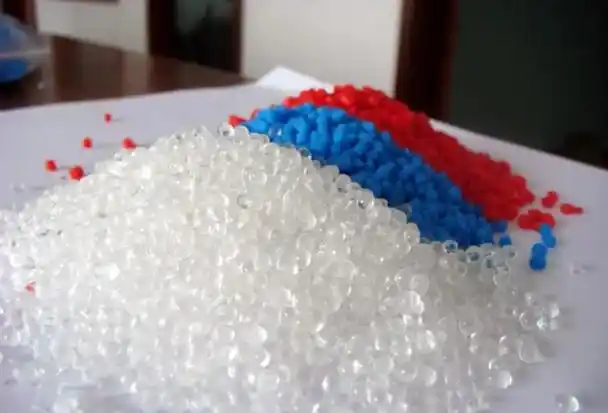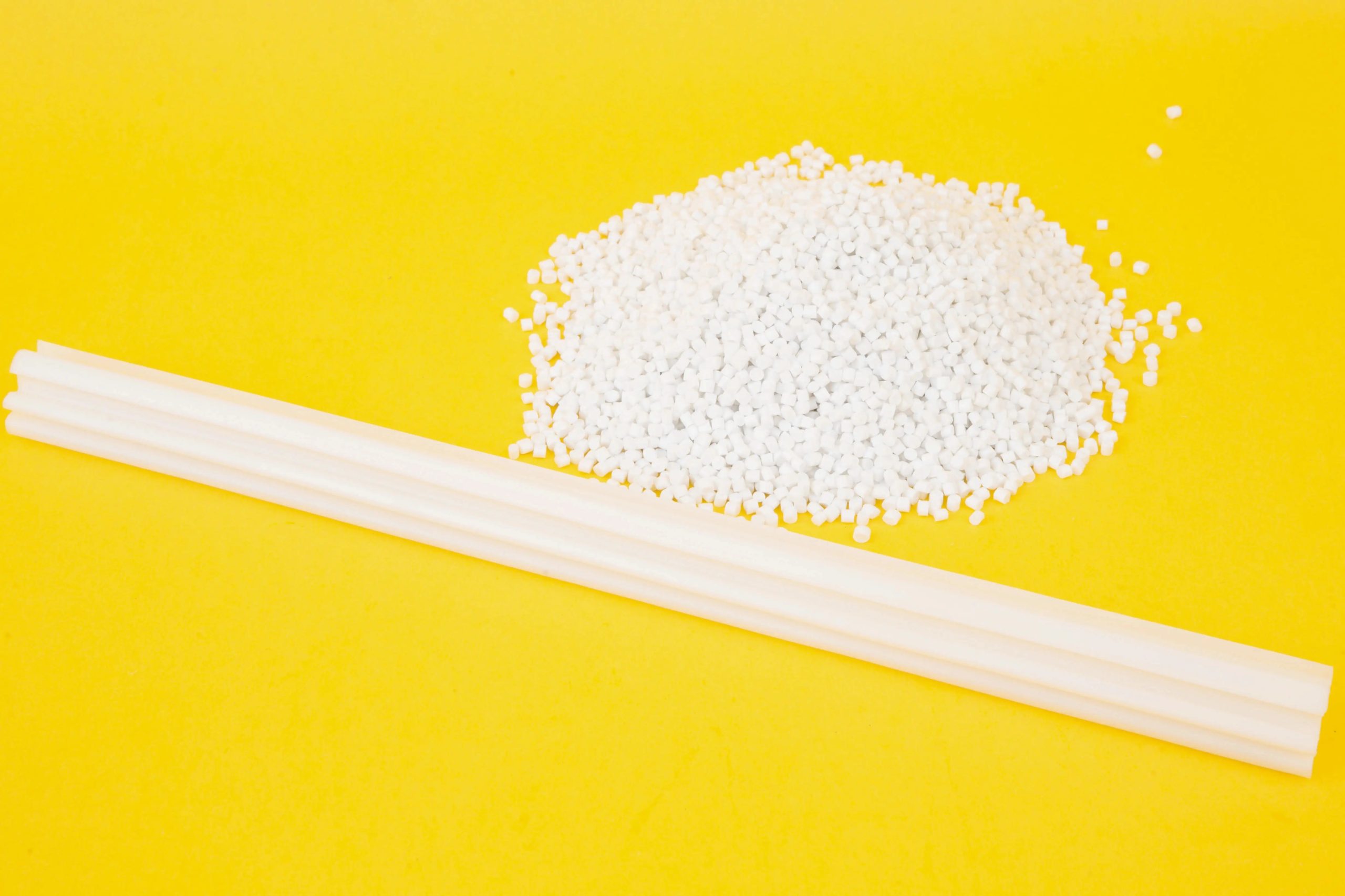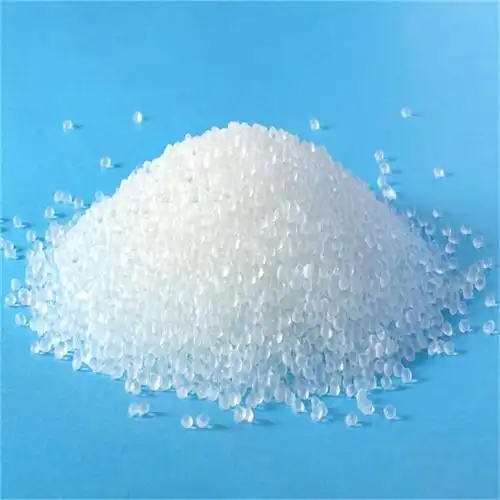As someone who’s navigated the materials industry for over fifteen years, I’ve had a front-row seat to the rise of Thermoplastic Elastomers (TPE) as a game-changer in manufacturing. These materials, which combine the stretchy, rubber-like qualities of elastomers with the moldability of plastics, are everywhere—from the grips on your toothbrush to the seals in your car’s engine. But when people ask, “What are the base materials of TPE elastomers?” they’re often looking to understand what makes TPE tick and how to choose the right type for their project. Drawing from my experience working with engineers, designers, and suppliers, I’ll break down the key base materials that form TPEs, explain their roles, and share practical insights to help you make sense of this versatile material. My aim is to give you a clear, hands-on guide to TPE’s building blocks so you can confidently select the right formulation for your needs.

Why Understanding TPE’s Base Materials Matters
TPEs are celebrated for their flexibility, durability, and ease of processing, but these properties don’t come from a single ingredient. Instead, TPEs are crafted from a blend of base materials—primarily polymers—that define their performance. Whether you’re designing a medical device that needs to be soft and biocompatible or an automotive part that must withstand harsh conditions, knowing the base materials behind TPE helps you predict how it will behave, how it can be processed, and whether it aligns with your project’s requirements. In my career, I’ve seen projects succeed or stumble based on the choice of TPE type, so let’s dive into the core materials that make up these elastomers.
The Main Types of TPE and Their Base Materials
TPEs aren’t a single material but a family of elastomers, each with a unique base polymer or polymer blend that gives it distinct properties. Based on my work with manufacturers and material suppliers, the most common TPE types and their base materials are Styrenic Block Copolymers (SBCs), Thermoplastic Polyolefins (TPOs), Thermoplastic Polyurethanes (TPUs), Copolyester Elastomers (COPEs), Thermoplastic Polyamides (TPAs), and Thermoplastic Vulcanizates (TPVs). Below, I’ll walk you through each type, their base materials, and real-world examples from my experience.
1. Styrenic Block Copolymers (SBCs or TPE-S)
Base Materials: Styrene and butadiene or isoprene, often blended with polypropylene or oils.
SBCs, commonly known as TPE-S, are the most widely used TPEs due to their affordability and versatility. They’re made by combining styrene (a hard, rigid component) with butadiene or isoprene (soft, elastic components) to form block copolymers. These materials are often blended with polypropylene or mineral oils to enhance flexibility and processability.
Properties: SBCs are soft, stretchy, and have a rubbery feel. They’re easy to process and cost-effective, making them ideal for consumer goods.
Applications: I’ve seen SBC-based TPEs in everything from soft-touch pen grips to elastic bands in wearable devices. For example, a client once used an SBC-based TPE for a phone case because it offered a great balance of softness and durability at a low cost.
Pros and Cons: SBCs are affordable and versatile but have limited heat and chemical resistance compared to other TPEs. They’re great for indoor applications but may degrade under prolonged UV exposure.
2. Thermoplastic Polyolefins (TPOs)
Base Materials: Polypropylene (PP) and ethylene-propylene rubber (EPR) or ethylene-propylene-diene monomer (EPDM).
TPOs are blends of polypropylene, a rigid thermoplastic, and elastomeric components like EPR or EPDM. These materials are known for their toughness and weather resistance, making them a staple in outdoor applications.
Properties: TPOs are durable, UV-resistant, and maintain flexibility in cold temperatures. They’re less elastic than SBCs but stronger and more weather-resistant.
Applications: I’ve worked with automotive manufacturers who chose TPOs for exterior parts like bumpers and trim because they hold up well against sun, rain, and temperature swings. For instance, a project I consulted on used TPO for car door seals that needed to stay flexible in freezing conditions.
Pros and Cons: TPOs excel in harsh environments but may not offer the soft, rubbery feel of SBCs. They’re also slightly more expensive.

3. Thermoplastic Polyurethanes (TPUs)
Base Materials: Polyurethane, often with polyol and isocyanate components.
TPUs are made from polyurethane, a polymer formed by reacting polyols (soft segments) with isocyanates (hard segments). This combination gives TPUs exceptional strength, abrasion resistance, and flexibility.
Properties: TPUs are tough, elastic, and resistant to wear, oils, and chemicals. They’re also biocompatible, making them ideal for medical applications.
Applications: I once helped a medical device company select a TPU-based TPE for IV tubing because it was flexible, sterilizable, and free of harmful additives. TPUs are also common in sports equipment, like shoe soles, due to their durability.
Pros and Cons: TPUs are high-performance but pricier than SBCs or TPOs. They’re worth the cost for demanding applications but overkill for simple, cost-sensitive projects.
4. Copolyester Elastomers (COPEs)
Base Materials: Polyester, typically polybutylene terephthalate (PBT) or polyethylene terephthalate (PET), combined with elastomeric segments.
COPEs are polyester-based TPEs that combine the strength of engineering plastics with elastomeric flexibility. They’re made by blending rigid polyester segments with soft, elastic segments.
Properties: COPEs offer high heat resistance, strength, and chemical resistance. They’re less flexible than SBCs but more durable in high-temperature environments.
Applications: I’ve seen COPEs used in industrial hoses and belts where heat and chemical exposure were concerns. For example, a client used a COPE-based TPE for a high-pressure fluid hose that needed to withstand aggressive chemicals.
Pros and Cons: COPEs are excellent for industrial applications but expensive and less common in consumer goods due to their stiffness.
5. Thermoplastic Polyamides (TPAs)
Base Materials: Polyamide (nylon) combined with elastomeric segments.
TPAs, or polyamide-based TPEs, are made by blending nylon with elastomeric components to create a material that’s both tough and flexible. They’re less common but highly specialized.
Properties: TPAs offer excellent chemical resistance, strength, and flexibility at high temperatures. They’re often used in niche applications.
Applications: I worked on a project where TPAs were used for high-performance cables in aerospace applications because they could handle extreme conditions without degrading.
Pros and Cons: TPAs are costly and specialized, making them unsuitable for general-purpose applications but ideal for high-tech industries.

6. Thermoplastic Vulcanizates (TPVs)
Base Materials: Polypropylene (PP) and cross-linked EPDM rubber.
TPVs are unique because they combine a thermoplastic matrix (usually polypropylene) with fully cross-linked EPDM rubber, mimicking the properties of vulcanized rubber while remaining processable like a plastic.
Properties: TPVs are highly elastic, weather-resistant, and durable. They’re often considered a step above TPOs in terms of elasticity.
Applications: I’ve seen TPVs used in automotive weather seals and window gaskets because they offer excellent compression set and weatherability. A manufacturer I worked with chose TPVs for a car’s window seals to ensure a tight seal over years of exposure.
Pros and Cons: TPVs are more elastic than TPOs but more expensive and harder to process due to their cross-linked structure.
Here’s a table summarizing the base materials and key characteristics of TPE types:
|
TPE Type |
Base Materials |
Key Properties |
Common Applications |
|---|---|---|---|
|
SBCs (TPE-S) |
Styrene, butadiene/isoprene, PP |
Soft, cost-effective, easy to process |
Grips, phone cases, elastic bands |
|
TPOs |
PP, EPR/EPDM |
Durable, UV-resistant, tough |
Automotive bumpers, seals, trim |
|
TPUs |
Polyurethane (polyol, isocyanate) |
Strong, abrasion-resistant, flexible |
Medical tubing, shoe soles |
|
COPEs |
Polyester (PBT/PET), elastomers |
Heat-resistant, strong, chemical-resistant |
Industrial hoses, belts |
|
TPAs |
Polyamide (nylon), elastomers |
Tough, chemical-resistant, high-temp |
Aerospace cables, niche applications |
|
TPVs |
PP, cross-linked EPDM |
Highly elastic, weather-resistant |
Weather seals, gaskets |
How Base Materials Shape TPE Performance
The base materials of a TPE determine its performance in real-world applications. Here’s how they influence key properties, based on my experience:
Elasticity: SBCs and TPVs, with their rubber-like components (butadiene, isoprene, or EPDM), offer the best elasticity. I’ve seen these used in stretchy consumer products where a rubbery feel was critical.
Durability: TPUs and COPEs, with their strong polymer backbones, excel in demanding environments. For example, a client used a TPU-based TPE for a conveyor belt that needed to resist abrasion and chemicals.
Temperature Resistance: COPEs and TPAs handle high temperatures better than SBCs or TPOs. I’ve worked on projects where COPEs were chosen for under-hood automotive parts exposed to heat.
Cost: SBCs are the most budget-friendly due to their simple styrene-based structure, while TPUs and TPAs are pricier due to their complex chemistry.

The Role of Additives and Blends
While the base polymer is the foundation, TPEs often include fillers, plasticizers, and additives to fine-tune their properties. In my work, I’ve seen how these additions can transform a TPE’s performance:
Fillers like calcium carbonate or talc increase stiffness or reduce costs. I once helped a manufacturer use calcium carbonate in an SBC-based TPE to lower production costs for packaging films.
Plasticizers like mineral oils enhance flexibility in SBCs. For example, a soft-touch grip I worked on used mineral oil to achieve a silky feel.
Additives like UV stabilizers or flame retardants tailor TPEs for specific environments. I’ve seen UV stabilizers added to TPOs for outdoor furniture that needed to withstand years of sunlight.
These components are blended with the base polymer during a compounding process, which I’ve observed in action at manufacturing facilities. The process requires precision to ensure uniformity and avoid degrading the material’s properties.
Choosing the Right TPE Base Material
Selecting the right TPE type depends on your project’s needs. Here are some practical tips from my experience:
Define Your Requirements: Start by listing the properties you need—flexibility, durability, temperature resistance, or cost-effectiveness. For instance, a medical device project I worked on required a biocompatible TPU to meet FDA standards.
Consider the Environment: If your product will face UV light or extreme temperatures, TPOs or TPVs might be better than SBCs. I advised a client to use TPVs for outdoor seals to ensure long-term performance.
Balance Cost and Performance: SBCs are great for budget-conscious projects, but don’t skimp on quality for critical applications. I’ve seen cheap TPEs fail in high-stress environments, costing more in the long run.
Test Extensively: Always prototype and test the TPE in real-world conditions. I once saw a TPE fail in a cold-weather application because the formulation wasn’t tested at low temperatures.

Environmental and Regulatory Considerations
In recent years, I’ve noticed a growing focus on sustainability and safety in the materials industry. TPEs are generally eco-friendlier than alternatives like PVC because they’re recyclable and often free of harmful additives like phthalates. However, the choice of base material matters:
SBCs and TPUs are often formulated without phthalates, making them suitable for medical or food-contact applications. I helped a client switch to a phthalate-free TPU for a children’s toy to meet EU regulations.
TPOs and TPVs are durable and recyclable, reducing environmental impact. I’ve seen TPOs used in automotive parts that were later recycled into new components.
Regulatory Compliance: Always check if the TPE meets standards like RoHS, REACH, or FDA requirements. I make it a habit to review these with suppliers to avoid costly compliance issues.
Lessons from the Field
Here are a few nuggets of wisdom I’ve picked up over the years:
Collaborate with Suppliers: TPE formulations are complex, so work closely with your supplier to customize the base material and additives. I’ve had great results partnering with suppliers to develop tailored TPEs.
Prototype Early: Testing a TPE in your specific application can reveal issues you didn’t anticipate. I once saw a TPE fail in a high-humidity environment because the formulation wasn’t optimized.
Stay Informed: Material science evolves quickly, so keep up with new TPE formulations and regulations. I attend industry conferences to stay ahead of the curve.
Don’t Overlook Processing: The base material affects how TPE is processed. For example, TPVs require careful temperature control during extrusion, which I’ve seen trip up manufacturers who didn’t adjust their equipment.

Closing Thoughts
The base materials of TPE elastomers—from styrene-based SBCs to polyurethane-based TPUs—define their versatility and performance. Each type offers unique strengths, whether it’s the affordability of SBCs, the durability of TPOs, or the high-performance capabilities of TPUs and COPEs. By understanding these materials and how they’re tailored with additives, you can choose the right TPE for your project, whether it’s a soft consumer product or a rugged industrial component. My years in the industry have shown me that the right TPE can make all the difference, and I hope this guide empowers you to make a choice that fits your needs perfectly.
Related Questions and Answers
Q: Which TPE base material is best for medical applications?
A: TPUs are often the best choice for medical applications due to their biocompatibility, flexibility, and ability to be formulated without harmful additives like phthalates. Always verify FDA or ISO compliance.
Q: Are all TPEs recyclable?
A: Most TPEs, including SBCs, TPOs, TPUs, COPEs, TPAs, and TPVs, are recyclable because they’re thermoplastics. However, recycling feasibility depends on the additives used and local recycling infrastructure.
Q: How do I choose between SBCs and TPOs for an outdoor product?
A: TPOs are better for outdoor use due to their superior UV and weather resistance. SBCs are more affordable but may degrade under prolonged sunlight unless formulated with UV stabilizers.
Q: Can TPVs replace traditional rubber in all applications?
A: TPVs mimic vulcanized rubber’s elasticity and durability but are easier to process. They’re great for seals and gaskets but may not match rubber’s performance in extreme chemical or high-temperature environments.





